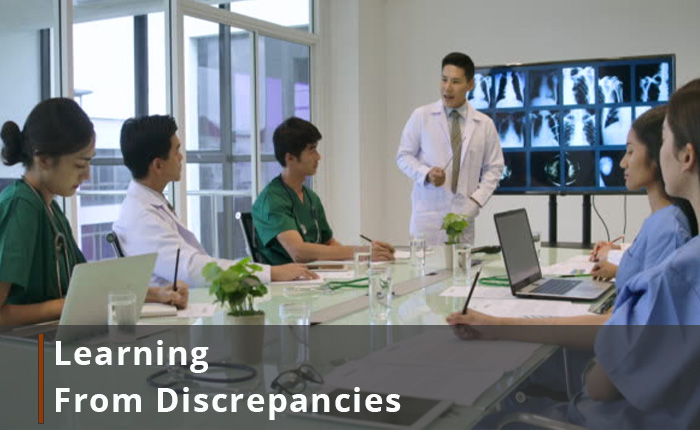Blog

Does learning from discrepancies have to be painful? Does the lead of clinical errors can be turned in to the gold of useful educational tools?
The lead of clinical errors can be turned into the gold of useful educational tools. An awareness of errors and their underlying causes can potentially increase the diagnostic performance and reduce individual harm.
Holding meetings to discuss discrepancies shows how difference of opinion between radiologists can be the gold of useful educational tools and improve the healthcare cycle.
Radiological imaging is an essential part of patient management. Despite significant technological developments, a radiological investigation is rarely definitive on its own, leading to discrepancies between radiological impressions and the ultimate outcome. Moreover, radiology reports, like all human endeavors, may contain errors or misunderstandings.
Definition of Discrepancy
Discrepancy refers to a reasonable difference of opinion between radiologists about a finding or diagnosis. It differs from error because discrepancies can be justified based on a range of scientific data, such as clinical information, laboratory results or radiological patterns. A reporting discrepancy occurs when a retrospective review, or subsequent information about patient outcome, leads to an opinion different from that expressed in the original report.
The term “error” is described as no uncertainty about the correct finding, with no possibility for dispute or disagreement, while the word “discrepancy” stands for justifiable differences of opinion between colleagues.
Diagnostic error is a condition that could harm the patient, with no acceptable cause and no scientific data for defense, approved by all experts in this field.
the ‘lead’ of clinical errors can be turned in to the ‘gold’ of useful educational tools. Interrogating the whole database periodically can enable a more constructive, wider view of the meeting itself, identify recurrent deficiencies in practice and point to where the need for continuing medical training is greatest. A regular, non-judgmental, anonymous, inclusive educational cases meeting is vital.
More details in below links
- https://www.ncbi.nlm.nih.gov/pmc/articles/PMC3609674/
- https://link.springer.com/article/10.1186/s13244-021-00986-8
- https://www.rcr.ac.uk/sites/default/files/publication/BFCR(14)11_LDMs.pdf
- https://www.researchgate.net/publication/311500275_Error_and_discrepancy_in_radiology_inevitable_or_avoidable
- https://www.radiology.ie/images/uploads/2012/01/Errors-Discrepancies-in-Radiology-Frequency-Causes-Prevention-and-Management.pdf

